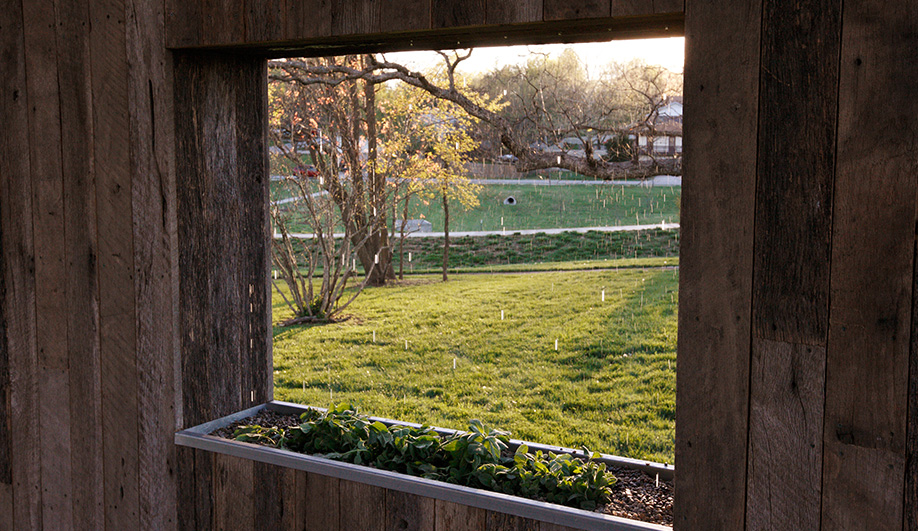
Artist Matthew Mazzotta’s Cloud House installation puts perspective on a rainy day.
In the American Midwest, nature giveth and nature taketh away. The agriculture belt roughly overlaps with Tornado Alley, where the storms that vitally nourish regional food production are also likely to spawn crop-devastating twisters – or disappear altogether in times of drought. Yet while the heartland’s fate remains in the hands of the elements, human understanding of that reality is weakening as farming communities hemorrhage population and work becomes increasingly virtual.
Springfield, Missouri, embodies these contradictions of modern life. Located in the heart of Tornado Alley and once covered in pasture and timber-rich forest, the Queen City of the Ozarks is better known today for its urban redevelopment projects and healthcare jobs.

Upon hearing residents wax nostalgic about Springfield’s agrarian past, artist Matthew Mazzotta created the interactive sculpture Cloud House. Tellingly placed on the site of a farmers’ market, the public artwork invites visitors to take a seat within a barnwood-clad structure. The shift in weight on the floorboards triggers a cistern-fed Styrofoam cloud to rain down upon the tin roof. Trickling through hidden conduits, the water pours over the windows and into planters sprouting with mint; any excess is channelled back into storage.

This Goldbergian recreation of the water cycle wears a familiar disguise. Cloud House assumes the profile of an everyman’s house; its seats appear as rocking chairs, and the planters may as well be window boxes. In combining sleight of hand with archetypal form, Mazzotta hopes that visitors will return to their own homes and, when the next rain calmingly jangles on rooftops and porch steps, meditate over mankind’s many-layered reliance on the planet.
New York writer David Sokol avoided contemplating the weather from his vertiginous balcony until Cloud House forced a reconsideration.
